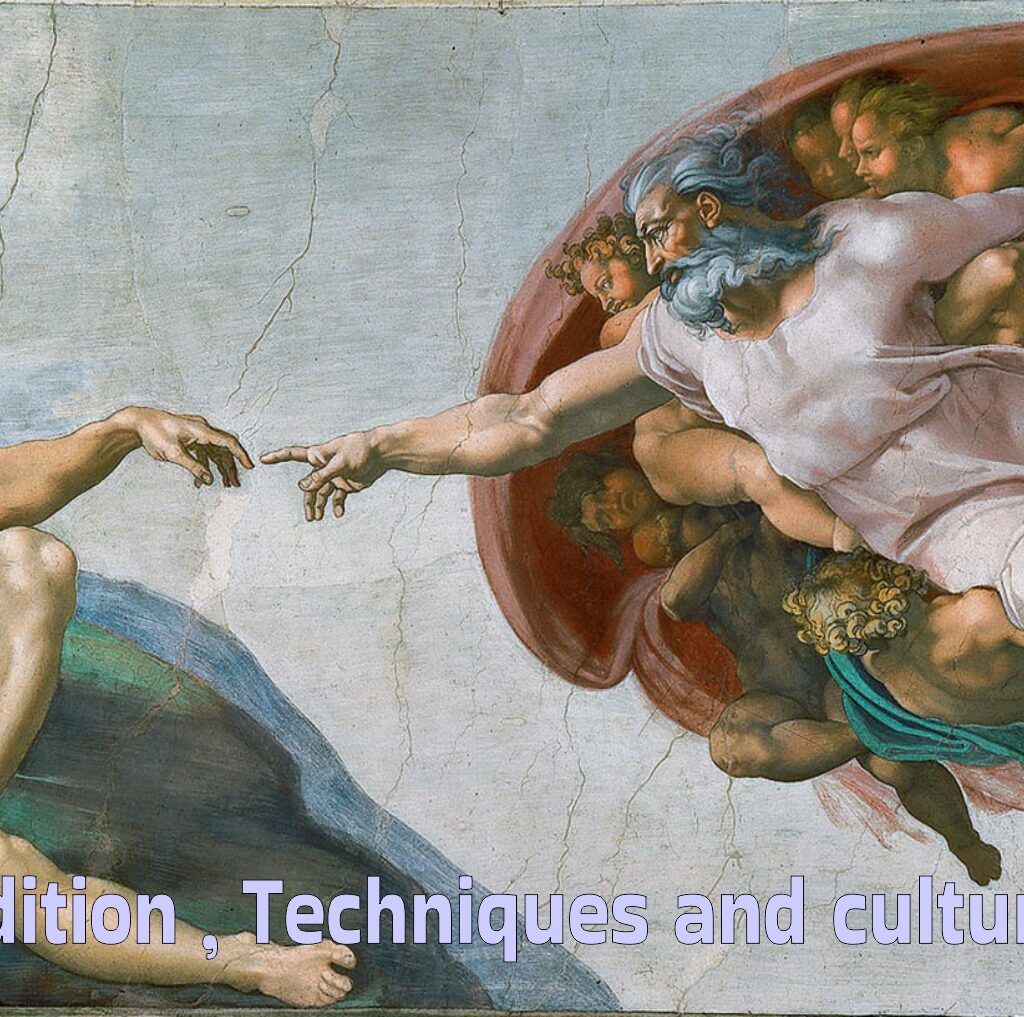
What is Fresco Painting?
**Fresco painting** is a centuries-old wall painting technique where artists apply water-based pigments onto freshly laid lime plaster. The term **”fresco”** originates from the Italian word *“fresco”*, meaning “fresh,” signifying the technique of painting on fresh, wet surfaces. This art form flourished during the Italian Renaissance and continues to influence artistic practices across the world.
In this technique, colours become an integral part of the wall as they are absorbed into the wet plaster. Once dry, the painting becomes highly durable, resistant to time, weather, and fading — a hallmark of timeless wall art.
Types of Fresco Painting
1. **Buon Fresco (True Fresco):** Painted on wet lime plaster; more durable.
2. **Fresco Secco (Dry Fresco):** Painted on dry walls; less permanent.
Main Components of Fresco
1. Support (Base Wall): Dry and solid stone or brick base without moisture.
2. Plaster (Intonaco): A smooth layer of lime, fine sand, marble dust, or volcanic ash.
3. Pigments: Natural water-based colours (mainly earth oxides).
Step-by-Step Fresco Painting Process
1. A rough plaster layer (*arriccio*) is applied and allowed to dry.
2. The artist sketches the design with red pigment (*sinopia*).
3. A fresh smooth plaster layer (*intonaco*) is applied on the area to be painted that day (*giornata*).
4. Painting begins quickly, before the plaster dries (within 7–9 hours).
5. Mistakes require reapplying fresh plaster and repainting.
6. As the wall dries, a chemical reaction (*carbonation*) locks the pigments in place.
The Science Behind Fresco
Key Chemical Reactions:
Limestone heating: `CaCO₃ → CaO + CO₂` Quicklime hydration:** `CaO + H₂O → Ca(OH)₂ Carbonation setting:** `Ca(OH)₂ + CO₂ → CaCO₃ + H₂O`
These reactions help fix the pigment into the wall, making frescoes incredibly long-lasting.
Challenges in Fresco Painting
* No room for error – corrections are nearly impossible once applied.
* Colour tone changes upon drying – requires experience and testing.
* Limited time for each painting section.
* Demands technical skill, speed, and planning – often considered a ‘master’s technique’.
Special Effects and Artistic Techniques
Fresco masters like ;Michelangelo’ and ‘Raphael’ used creative techniques:
* Scratched into wet plaster for depth.
* Created 3D effects using highlights and indentations.
* Example: In Raphael’s “The School of Athens”, indented eyes make figures look more expressive.
Cultural and Historical Impact
Frescoes are ‘symbols of spirituality, history, and artistic brilliance. During the Renaissance, they were used to:
* Depict religious stories.
* Decorate churches, chapels, and palaces.
* Glorify intellectual and humanist values.
Even after 500+ years, frescoes like Michelangelo’s ‘Sistine Chapel’ ceiling remain intact, proving the power of this technique.
Conclusion
Fresco painting combines art, science, and craftsmanship. With the right materials and skill, artists created masterpieces that are now eternal cultural treasures. Fresco is not just about beauty—it is about harmony between nature, time, and human vision.Tradition, Technique, and Cultural Impact.
